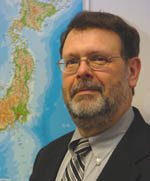From the Editor
Dear readers,

While the US-Japan relationship is often viewed in terms of issues such as trade and defense, it exists at the same time on a variety of other levels, including the personal and the cultural. One of the things that make our bilateral relationship so strong is the sheer number of person-to-person connections between our two peoples, be it in the workplace, among friends, or even within the family.
The number of international marriages in both our countries continues to grow, and though love may know no boundaries, laws often do. It is sad enough when a marriage breaks down under ordinary circumstances, but when one parent takes a child overseas without the permission of the other, or in violation of a court order, the matter can get complicated in a hurry. In this issue of "American View," we interviewed Deputy Assistant Secretary of State for Overseas Citizens Services Michele Bond about the serious problem of international parental child abduction. Deputy Assistant Secretary Bond explains this difficult issue and outlines what the Department of State does to address it, particularly with regard to Japan.
On the professional level, working together provides an invaluable opportunity to deepen mutual understanding, and in that regard, the Mike Mansfield Fellowship Program has provided invaluable opportunities for a select group of U.S. federal employees to gain an in-depth understanding of Japan and how the GOJ works by actually spending a year inside a Japanese ministry or agency. This program does honor to the memory of Mike Mansfield (1903-2001), a remarkable public servant and distinguished statesman who helped guide the United States through important transitions in its relationship with Asia. Mike Mansfield served as Ambassador to Japan from 1977-1989, the longest of any U.S. Ambassador to Japan.
Americans and Japanese alike seem to share an interest in high technology and hi-tech entertainment. Our third article looks at how the revolution in digital technology is changing how movies in America are made, promoted, delivered, and watched. In addition to the quantum leap in picture and sound quality, new methods of production and distribution have emerged that pose a challenge to the existing order, but give more opportunities to filmmakers at the grassroots level.
I hope you enjoy our Fall 2007 issue of "American View."

